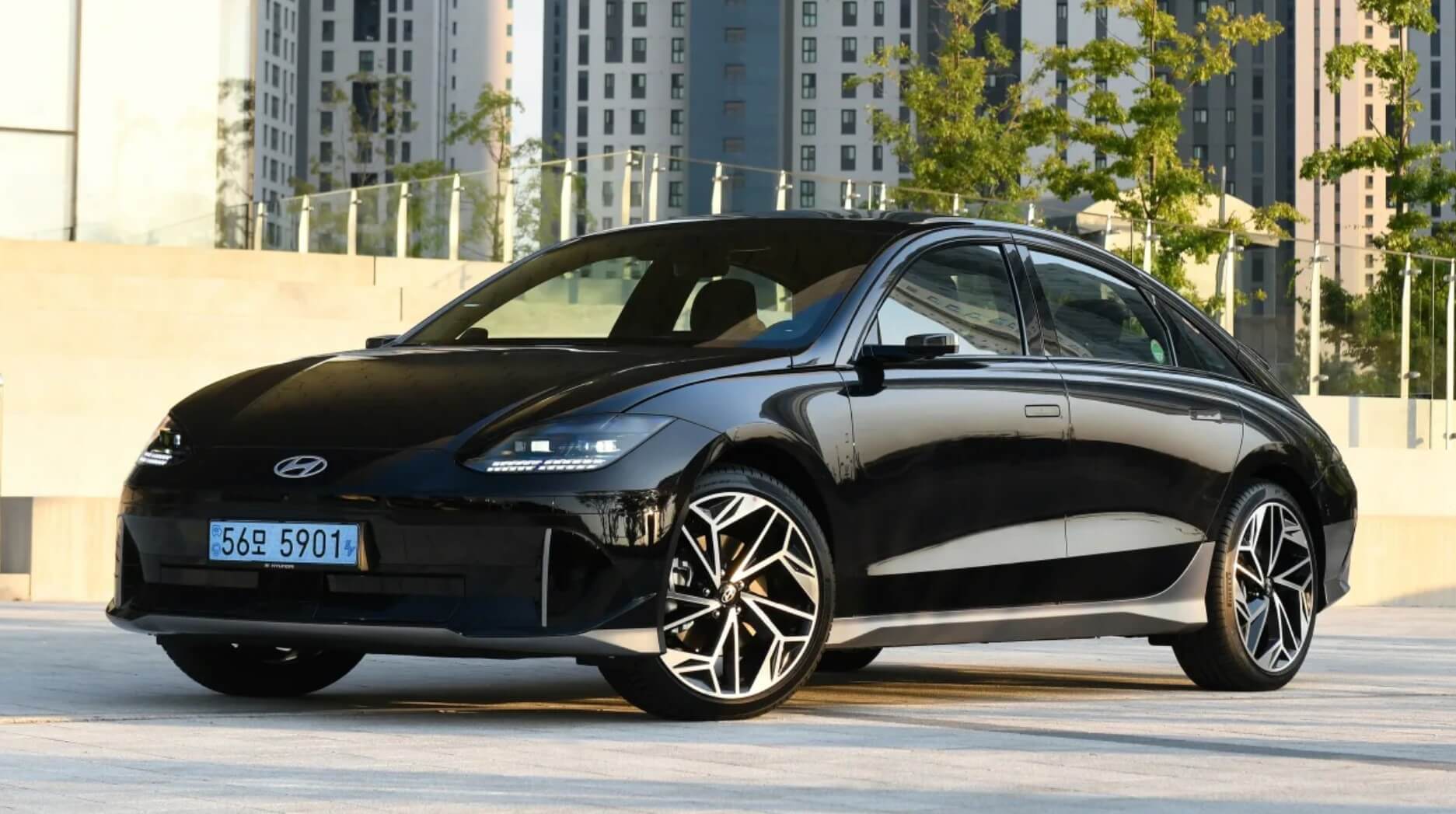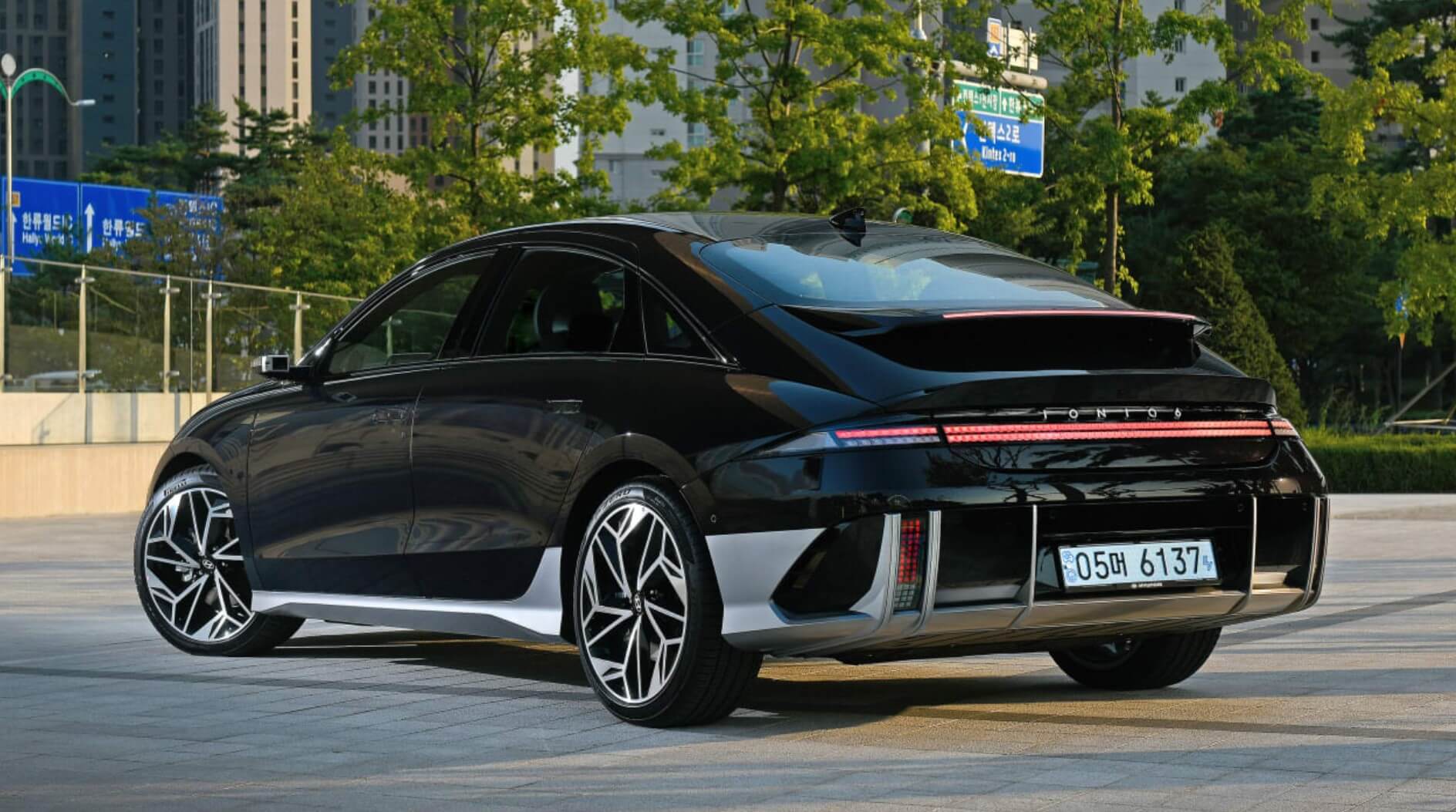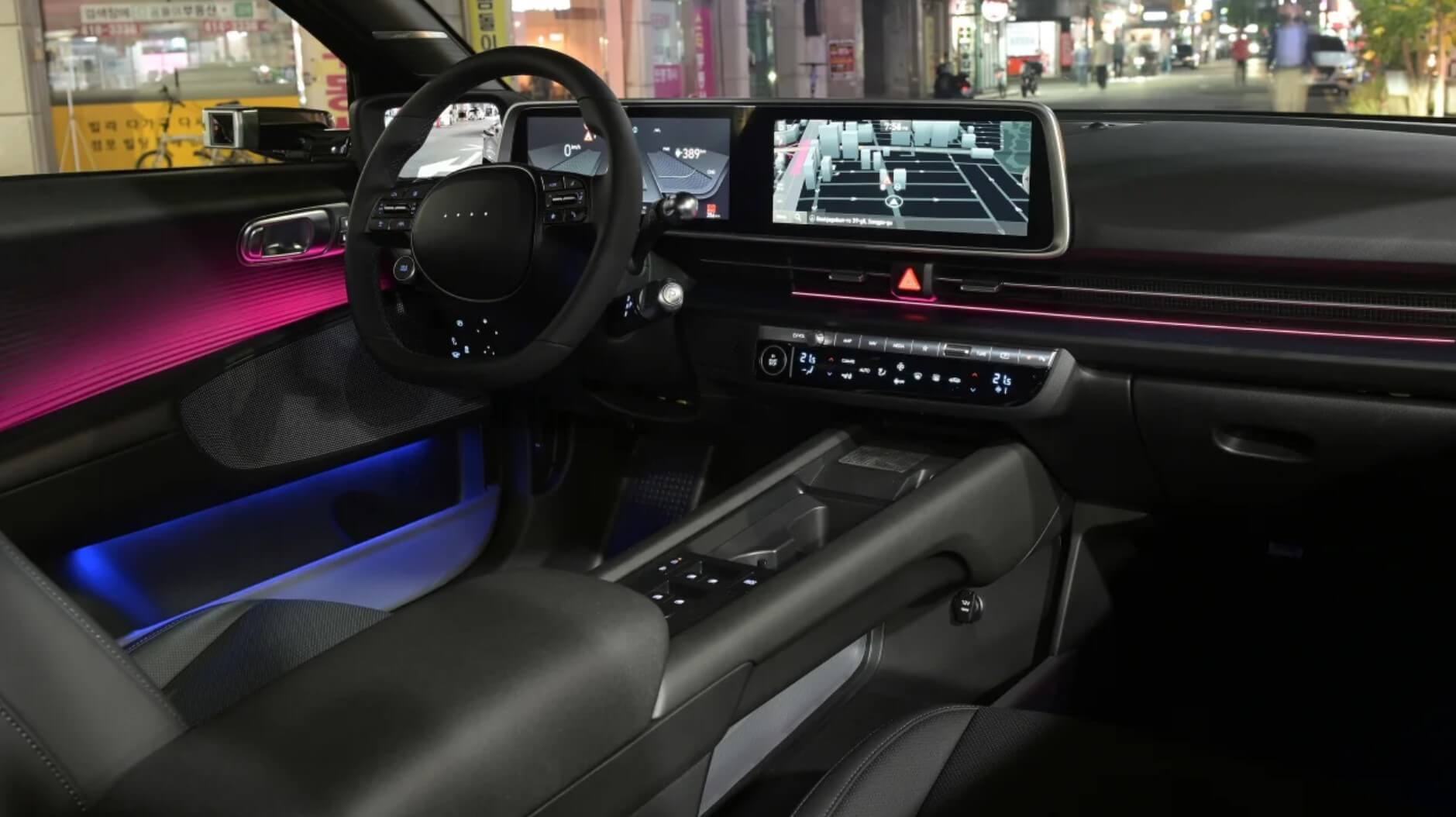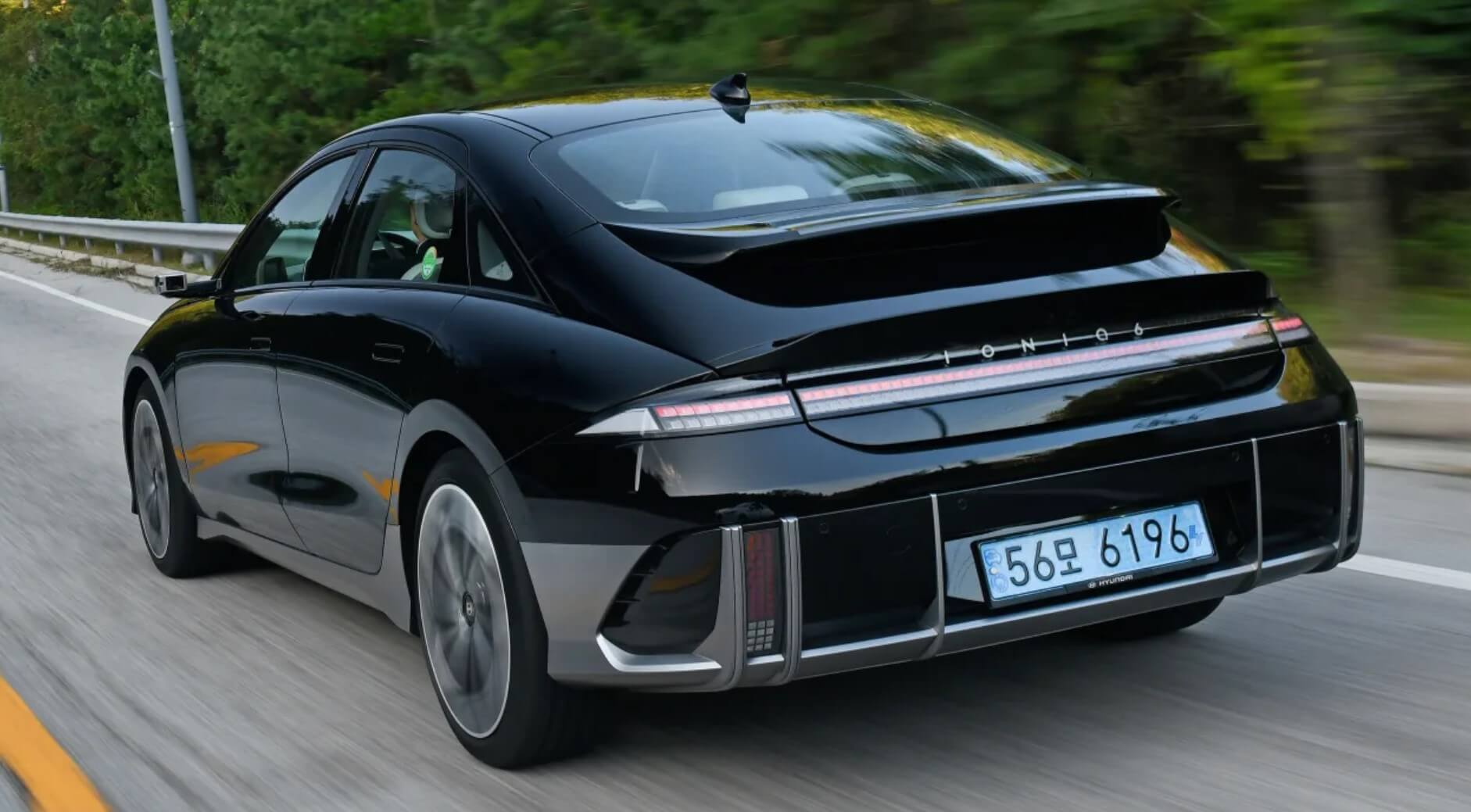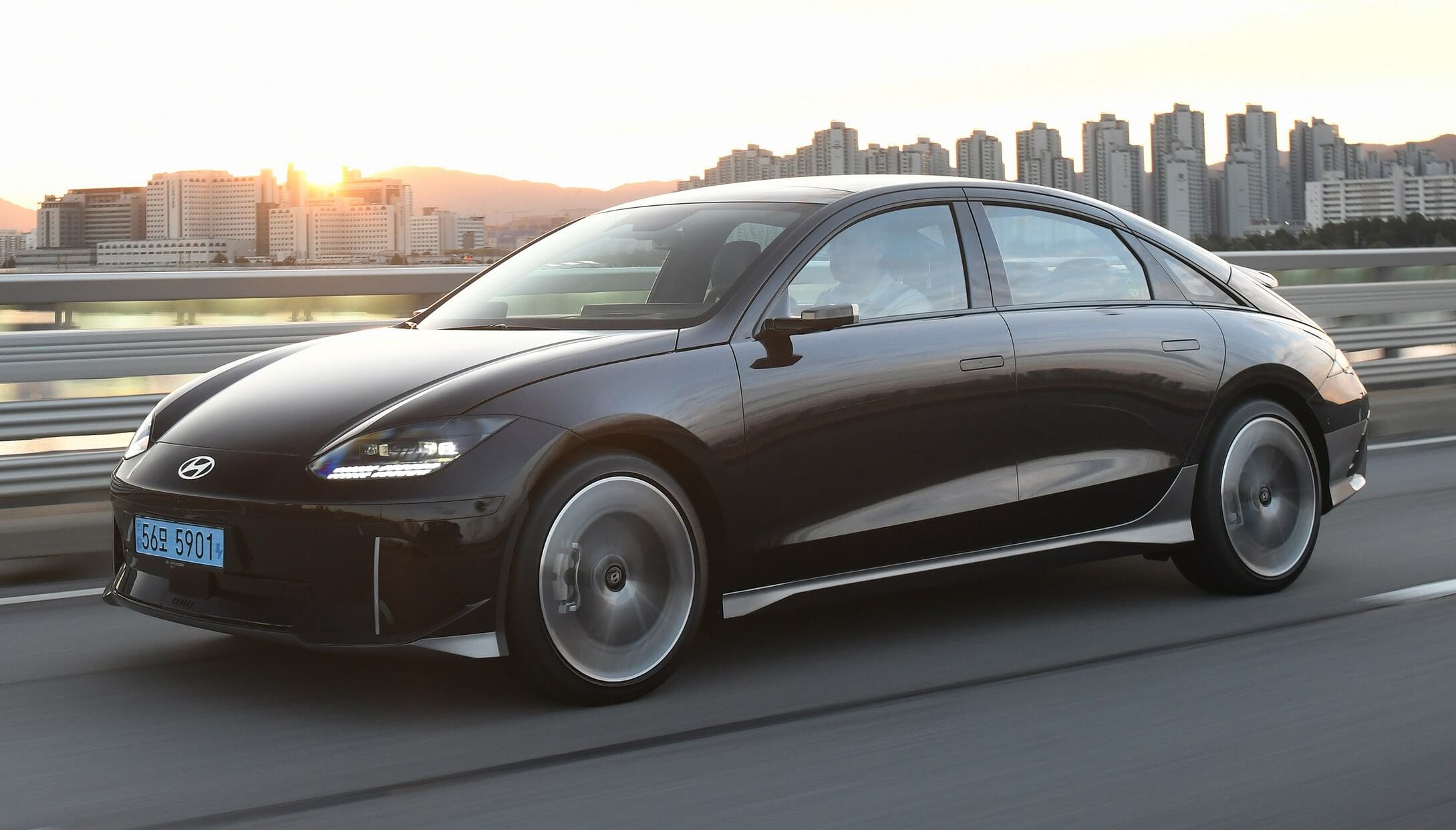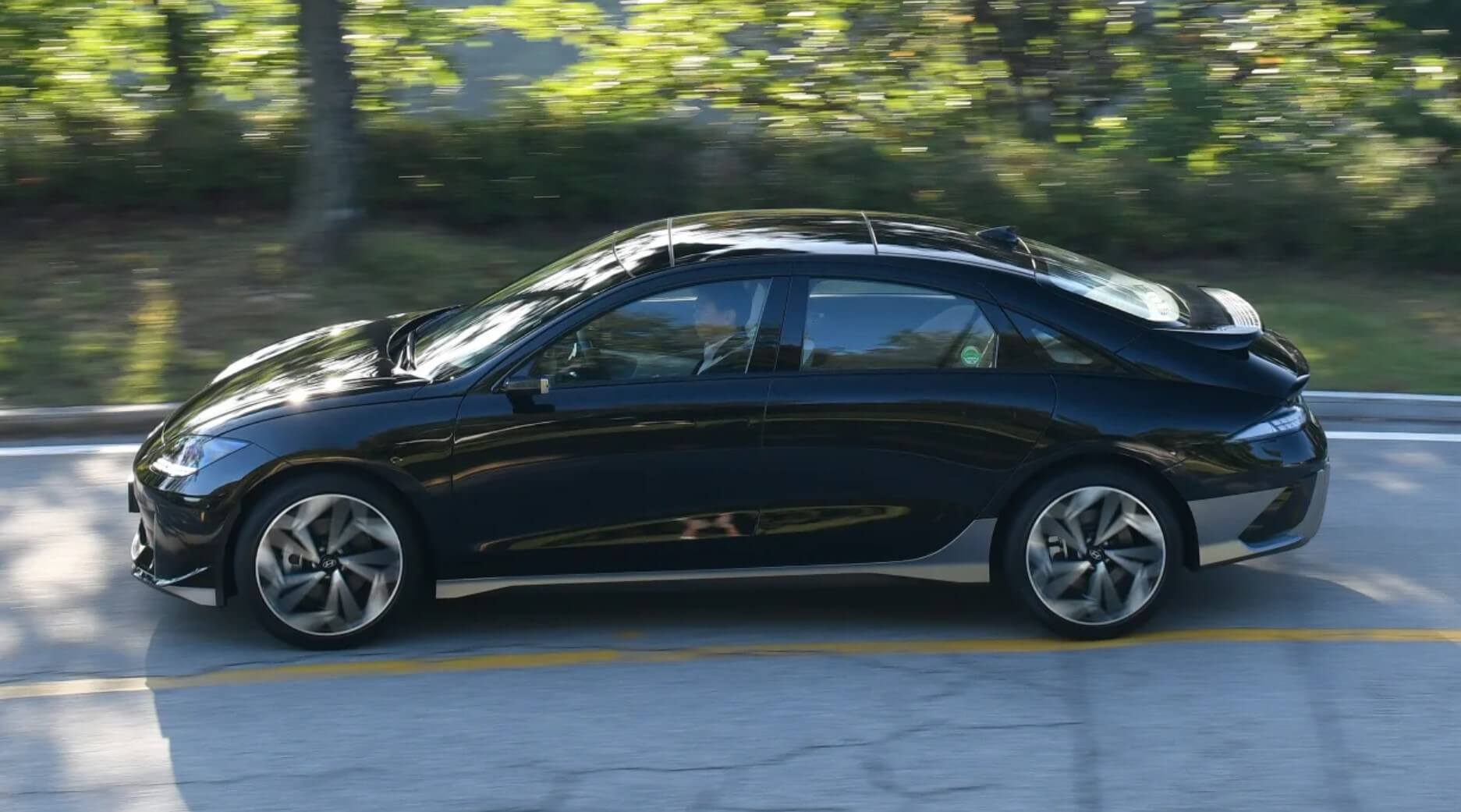We drive the deeply impressive Hyundai Ioniq 6 electric ahead of its 2023 arrival in Australia.
Hyundai isn’t playing it safe in 2022. Given that the space-age Ioniq 5 hit the ground running as one of the most desirable electric cars of last year, it’d be fair to assume that the new Ioniq 6 sedan would bear more than a passing resemblance to its crossover relative. But Hyundai has severed any visual links to the 5 with a streamlined design inspired by the Prophecy show car of 2020 and it is due to go on sale in Australia early next year.
Packaging constraints mean that the production car isn’t as svelte as the concept, but its still-sleek looks will help it against the Tesla Model 3 and Polestar 2 when it goes on sale this year. Thanks to the E-GMP platform’s 800V electrical architecture, the Ioniq 6 can charge at speeds of up to 350kW, enabling a 10 to 80 per cent top up in just 18 minutes. The entry-level model is powered by a 53kWh battery feeding a single rear-mounted electric motor to provide 430km of range. But the car we drove is the most potent version available – that is, until a hot Ioniq 6 N inevitably arrives.
For now, the flagship Ioniq 6 gets a 239kW dual-motor set-up, a 77.4kWh battery and 585km of range on the WLTP cycle. There is a rear-drive model with that larger battery too, and that streamlined body really pays dividends with a claimed range of 625km beating the Model 3.
Inside, you’re greeted by a similar cabin architecture to the Ioniq 5. This time, though, Hyundai has refined the details of what was already an excellent interior. For instance, the bezels surrounding the dual 12-inch displays are now black rather than white to tidy up the look, and the digital door mirrors are beautifully integrated into wings that sweep up from the dash.
Fit and finish are mostly superb, and Hyundai’s infotainment is one of the more intuitive systems on the market, despite the occasional fiddly sub-menu. Response times are swift, and thoughtful additions such as blind-spot displays in the digital dash are welcome.
The Ioniq 6’s coupé-like silhouette means that those over six-feet tall may find themselves brushing against the headlining, but rear-seat comfort is more of a sticking point. Legroom is generous, but the floor-mounted battery eats into the footwells, which isn’t ideal for longer-limbed passengers. Hyundai has yet to provide an official boot capacity figure, but the load space isn’t cavernous.
The chassis and powertrain calibration of our test car was tailored for South Korea, but there’s an inherent quality to the Ioniq 6’s dynamics. The measured throttle response in Normal mode allows for smooth progress at low speed, while the ride is firm but well damped. Sudden road imperfections can send a shimmy through the chassis – particularly when you strike a bump mid-corner – but the Ioniq 6 is mostly serene and cosseting on the move.
Bury the throttle in Sport mode, and that serenity is decimated by a violent hit of acceleration. The dual-motor version’s claimed 0-100km/h time of 5.1 seconds feels conservative, and there’s a deep well of torque (605Nm, to be exact) to draw on, which provides effortless performance.
It’s not quite as urgent at motorway speeds, but you’re never left wanting for poke. And, given the rate at which the Ioniq 6 can travel, it’s useful that its long wheelbase provides stability at speed. The steering is accurate and well weighted, but is almost entirely devoid of communication.
Our test car’s set-up felt geared towards high-speed security rather than incisive handling, but the Ioniq 6 still neatly carves up B-roads at a brisk pace. Drive smoothly and the Ioniq 6 corners relatively well, even if it’s not overly exciting. The low-slung body and floor-mounted battery mean that its mass is relatively well contained, too.
The brakes are one of the weaker aspects of the Ioniq 6’s dynamic repertoire, though, and the car’s mass does come into play when slowing from high speeds. They’re powerful enough, but the pedal feel isn’t particularly confidence-inspiring. You can largely side-step this with Hyundai’s i-Pedal one-pedal driving mode, which works well until you come to a complete stop.
Pricing has yet to be confirmed, but if it starts from around $80,000 (which it’s expected to), the Ioniq 6 will be very well placed indeed.
Hyundai’s EV onslaught continues with another deeply impressive machine. The Ioniq 6 is a radical visual departure from the Ioniq 5, but the core ingredients are familiar. With class-leading range, well judged dynamics and a comprehensive suite of tech, it’s a convincing effort, and proof that Hyundai’s winning formula hits the mark beyond SUVs.
Yousuf Ashraf




